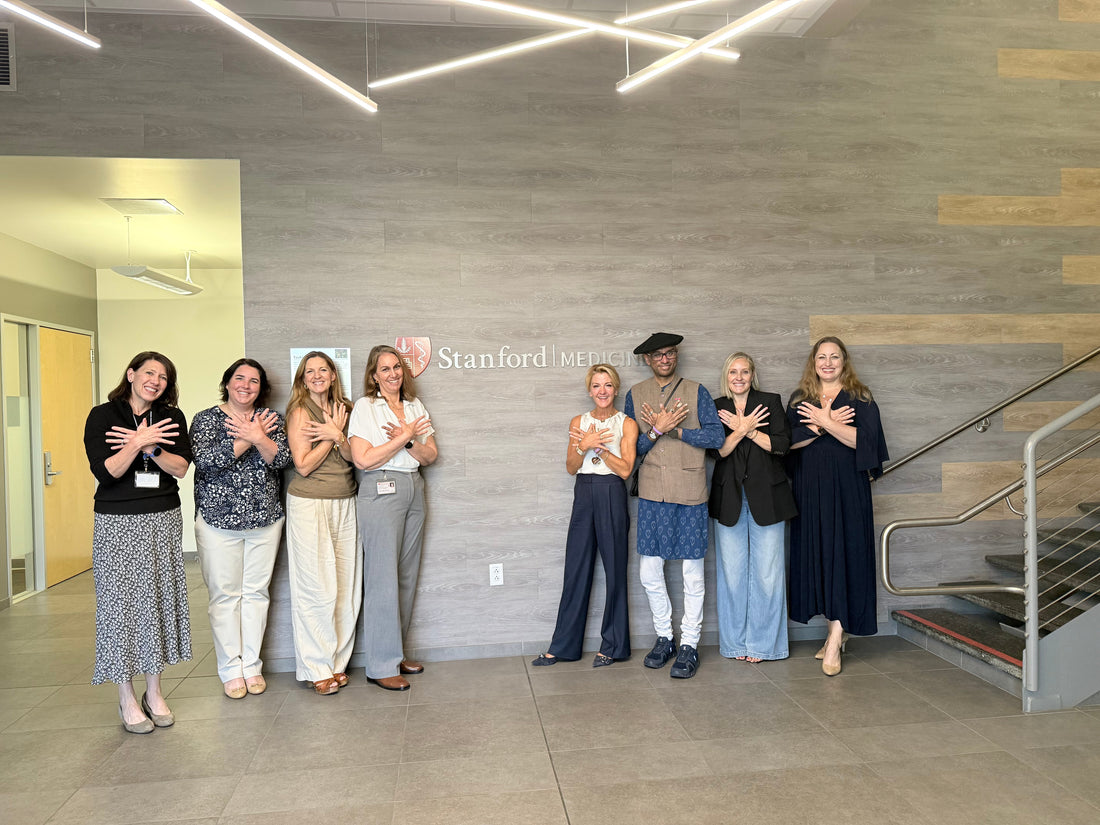Reflections from Stanford University School of Medicine:
Penny’s Flight at the RASopathies Research Summit

On September 17th, I represented Penny’s Flight Foundation at Stanford University School of Medicine where the BRIDGE Lab (Brain Imaging, Development, Genetics) group hosted the RASopathies Research Summit 2025. The focus was clear: How Do We Move the Needle for Interventions? The meeting brought together scientists, researchers, clinicians, and foundations. Our shared goal was to open conversations that will shape a white paper, close the gap between preclinical research and human outcomes, and identify tools to speed the path to effective interventions. It was an honor to sit with this group. I felt Penny’s presence the entire time. She would have gotten a kick out of me being with such incredible scientists and researchers. After years in fashion PR, this is becoming my new normal.
I want to thank Dr. Tamar Green, associate professor of Psychiatry and Behavioral Sciences and Dr. Laura Roberts, Chair of the Katherine Dexter McCormick and Stanley McCormick Memorial Professorship in the same department. Both at Stanford. Both the reason this summit happened.

Opening the Summit with Penny’s Story
I was invited to open the Summit by sharing Penny’s journey and the birth of Penny’s Flight Foundation. I love nothing more than sharing Penny’s beautiful story and how she lived her life with courage, humor, and grace, despite the challenges of NF. She continues to inspire me everyday and by sharing her story we have been able to inspire others to see beauty in imperfection, stay positive in the face of challenge, and live with faith over fear. Through Penny’s bright light, we have also raised awareness and funding for NF. I ended with a simple point. When we collaborate, we raise awareness. When we raise awareness, we make progress.
A Day of Science and Shared Purpose
The Summit’s agenda showed the urgency of the work ahead:
-
Basic Science – Dr. Michelle Monje and colleagues presented research on the biology of RASopathies. They asked questions that will unlock tomorrow’s therapies.
-
Translational Research – Dr. Tamar Green led the discussion on how to move discoveries from lab to clinic faster.
-
Clinical Perspectives – Dr. Cynthia Campen highlighted what this science means for families right now.
We also heard reflections from our dear friend, and partner, Dr. Kalyan Vinnakota from the Gilbert Family Foundation, who discussed how philanthropy can fuel bold new approaches.
What struck me most was the humility and commitment of every researcher in the room. They are not just asking “why” and “how” but also “for whom”, for children like Penny or families like ours.

Looking Ahead: Collaboration & White Papers
In the afternoon, Dr. Green and Dr. Erin Gibson led the group planning sessions. We set priorities. We named challenges. We mapped out the next steps. The goal: turn conversations into a white paper that guide both science and care.
To watch leaders consolidate themes, brainstorm cross-disciplinary collaborations, and map out future directions was a reminder. Progress is never the work of one. It is the work of many.
Closing Reflections
Dr. Mary Leonard brought the day to a close with remarks that stayed with me. This Summit was not just a meeting. It was a movement.
As I left Stanford, I carried with me Penny’s voice and spirit. She would have loved the curiosity, compassion, and determination in that room. She would have smiled knowing her story and her light continue to inspire action.
At Penny’s Flight Foundation, our mission is steady. Honor Penny. Advance research. Build collaboration. Create a future where families impacted by NF and RASophies can look ahead with hope.

Together, we can and WILL #ENDNF.

